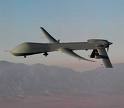Drones and Law Enforcement in America: The Unmanned Police Surveillance State

The US is at the dawn of “a new era in police surveillance,” the Associated Press revealed casually last week. In a Chicago-based story about the growing use of drones and other sophisticated, unmanned aircraft for aerial surveillance, it noted that the Congressional Research Service considers their future use “bound only by human ingenuity.”The story focused on one Illinois legislator who has proposed a limit on how far law enforcement agencies can go.
But bills have been introduced in almost 40 states, and the Bill of Rights Defense Committee has two model ordinances to assist communities in the emerging movement against domestic surveillance drones. This isn’t science fiction, although the threat of an emerging Surveillance State does figure in my forthcoming novel, Dons of Time.
As I learned while researching, drones already fly pretty freely in US airspace. Law enforcement groups use them for search and rescue operations, for security along the border (mainly the one with Mexico so far), for weather research and scientific data collection. In fact, last year Congress authorized the Federal Aviation Administration (FAA) to open the nation’s airspace to widespread drone flights by 2015.
The FAA estimates that more than 7,000 civilian drones could be surfing the sky by 2020.
As Bill of Rights Defense Committee Executive Director Shahid Buttar explains, “Because the legal landscape governing drones is essentially barren, law enforcement agencies around the country are currently making policy to suit their interests. But we live in a constitutional Republic, meaning that We the People hold the opportunity — and responsibility — to petition our local representatives for legal protections that Congress is too timid to provide.”
In Seattle, the police department purchased two drones through a federal grant, but opted not to use them after protests in February. A bill barring Virginia law enforcement from using drones for two years passed the General Assembly months ago, but awaits a response from the governor. The National Conference of State Legislatures has heard about more than 70 bills in around 40 states that address the use of drones.
The Defense Committee’s legislative models are designed to satisfy diverse interests. One creates a drone-free zone, while another establishes strict requirements limiting their use by law enforcement agencies and other public officials. The model regulating drone use (rather than outlawing it) allows them to be used with a judicially issued warrant or for limited non-law enforcement purposes like fire detection, hazardous material response, search & rescue, and natural disasters.
Beyond constitutional concerns, proposed legislation also addresses some safety issues. According to Buttar, many of the drones currently available to law enforcement have limited flying time, can’t be flown in bad weather, must be flown in sight of an operator, and can only be used during daylight hours, “making them ill-suited to search and rescue missions and best suited for pervasive surveillance.”
On the other hand, AP points to some of the attractions driving the rush to drone use. Unmanned aircraft vary widely in size and capability. They can be as small as a bird or look like a children’s remote-controlled toy, and yet can be equipped with high-powered cameras, microphones, heat sensors, facial recognition technology or license plate readers. Similar technology has been used by the US military and CIA to track down Al-Qaida operatives abroad.
Law enforcement likes drones because they’re relatively cheap; they reportedly keep down the price by cutting fuel and maintenance costs, as well as reducing manpower. Look at it this way: A police helicopter can cost from $500,000 to $3 million, and about $400 an hour to fly. It can be “affordable” snooping for those with the means of surveillance.

